Hamilton History Facts and Timeline
(Hamilton, Pembroke, Bermuda)
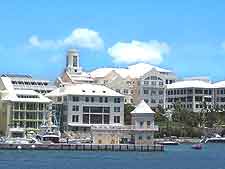
Few world capitals contain as small a population as Hamilton, the important capital of the island of Bermuda. History has witnessed Hamilton become Bermuda's financial centre, as well as one of the island's principal tourism hubs.
Most cruise ships choose to dock here, with countless local shops, restaurants and businesses being situated on Front Street, named after its neighbouring harbourfront and best explored at a leisurely pace, either by foot or onboard a horse-drawn carriage.
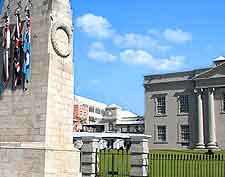
Hamilton's bright-white City Hall is of great local significance and is today called home by Bermuda's national art gallery and art society.
Earliest History
Nearly two centuries before Hamilton was officially established, Spanish sailor Juan de Bermudez first set eyes on the island that would one day bear his name. He claimed Bermuda in the name of Spain, although interestingly, he was unable to actually land his ship, due to the treacherous rocky coastline. Little else is known about these early Spanish explorers and even less is known about the people who lived in present-day Hamilton or Bermuda, prior to the days of European colonisation.
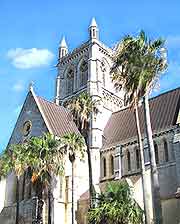
Virginia Company Settlement
Bermuda's first permanent settlers entered the island rather unexpectedly. In the year of 1609, a small fleet of ships set sail from
Plymouth,
England, headed for Jamestown in Virginia. The fleet's flagship, named the Sea Venture, managed to survive a violent storm which separated it from the other ships, sending it rather off course. The ship eventually approached the island, becoming shipwrecked just off the coastline of Gates Bay. All 150 people aboard the Sea Venture survived the storm and managed to swim to shore, including Admiral Sir George Somers.
The following year, Somers and his men managed to build no less than two separate boats from the remains of the Sea Venture, and successfully reached Jamestown, rather later than initially planned. However, behind them they left a cluster of houses and even a little church, along with a small number of the original crew who chose to permanently live on this tropical island. Two years later, 60 more British settlers arrived in Bermuda and established the island's earliest capital, St. George's. Bermuda's first parliament met in St. Peter's Church, within today's nearby town of St. George's, and the island officially became a British colony in 1684.
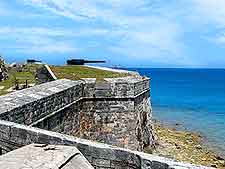
American War of Independence
In 1775, Bermuda received an exemption from the Continental Congress trade embargo with Great Britain and its colonies, during the American Revolution. At this time, much of Hamilton's food came from the United States, while St. George's grew to become one of the main sources for American gunpowder.
Founding of the City
The city's own history began in 1790, when a piece of land was set aside for what would be Bermuda's future capital in 1815. It was named after Irish official Sir Henry , Bermuda's then governor. The 36-room Hamilton Hotel, the first in Bermuda, opened in the mid-19th century as part of Front Street's 'clean up'. This hotel became a major cornerstone of Bermuda's growing tourism industry, that is until it burned down in the 1950s.
Of note, Hamilton officially became a city in 1897, while its Cathedral of the Most Holy Trinity was consecrated in 1911, after being rebuilt from limestone following fire damage in 1884.
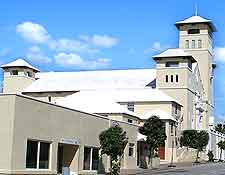
Modern Times in the City
The area of Hamilton overlooking its namesake harbour has now become a healthy business district, filled with shops and office buildings.
Despite a long-time law prohibiting the construction of buildings obscuring the Cathedral of the Most Holy Trinity, this regulation has since been bent, permitting structures as high as ten floors to now be erected in Hamilton. Whilst the capital has experience a period of rapid growth, its historic buildings and thriving tourism industry both remain very much unchanged and quite appealing.
 Few world capitals contain as small a population as Hamilton, the important capital of the island of Bermuda. History has witnessed Hamilton become Bermuda's financial centre, as well as one of the island's principal tourism hubs.
Few world capitals contain as small a population as Hamilton, the important capital of the island of Bermuda. History has witnessed Hamilton become Bermuda's financial centre, as well as one of the island's principal tourism hubs. Hamilton's bright-white City Hall is of great local significance and is today called home by Bermuda's national art gallery and art society.
Hamilton's bright-white City Hall is of great local significance and is today called home by Bermuda's national art gallery and art society.

